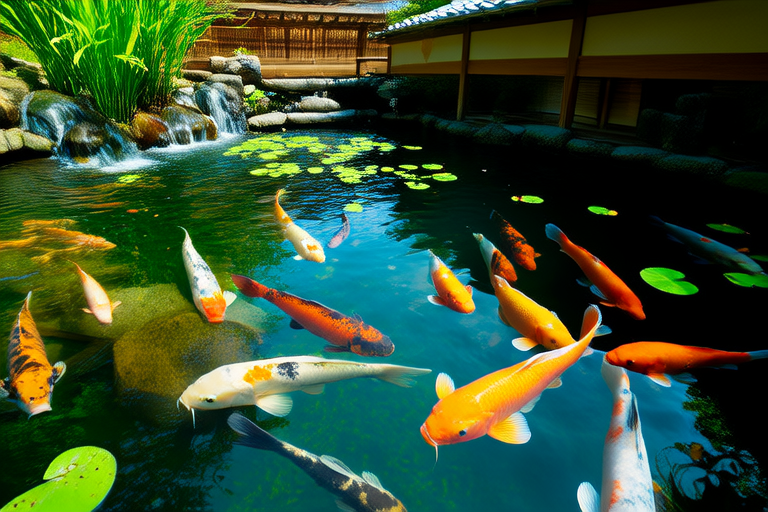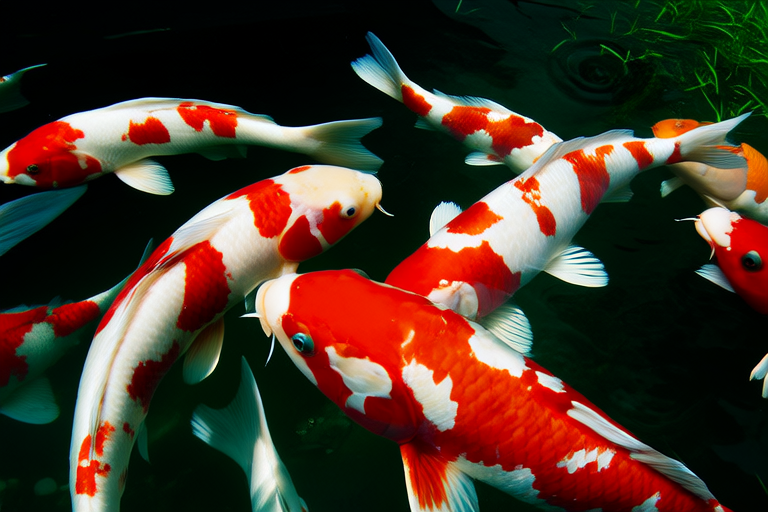
How to Create an Oasis for Your Koi: Ultimate Pond Setup Tips
Welcome to the fascinating world of koi ponds! Creating a serene oasis for your koi fish involves more than just digging a hole and filling it with water. It requires careful planning, thoughtful design, and attention to detail to ensure that your aquatic pets thrive in their new home. This comprehensive guide will walk you through every step of setting up a perfect koi pond, from selecting the ideal location to maintaining optimal water conditions.
Selecting the Perfect Location
The first step in creating a koi pond is choosing the right spot. The location you select can significantly impact the health and happiness of your fish. Consider factors like sunlight exposure, wind protection, and proximity to electrical outlets when deciding where to place your pond.
- Sunlight Exposure: While some sunlight is beneficial for algae growth, which provides food for your koi, too much direct sunlight can lead to excessive algae blooms and higher temperatures in the water. Aim for a location that receives partial shade throughout the day.
- Wind Protection: Strong winds can cause ripples and splashing, potentially leading to evaporation and increased water loss. Locate your pond in a sheltered area or consider adding windbreaks if necessary.
- Proximity to Electrical Outlets: Ensure that your chosen site has easy access to power sources for equipment like pumps, filters, and heaters.
Pond Size Considerations
Deciding on the appropriate size for your koi pond depends on several factors including the number of fish you plan to keep, local climate conditions, and available space. Generally, each adult koi should have at least 200 gallons of water, but larger ponds provide better living conditions and easier maintenance.
In colder climates, deeper ponds (at least four feet deep) help insulate against freezing temperatures during winter months. Conversely, shallower ponds may be preferable in warmer regions where maintaining cooler water temperatures is crucial for koi health.
Filtration System Recommendations
A reliable filtration system is essential for keeping your koi pond clean and healthy. There are three main types of filtration systems used in koi ponds: mechanical, biological, and chemical.
- Mechanical Filtration: This type removes debris from the surface of the water before it enters the filter chamber. Skimmers and leaf traps are common examples.
- Biological Filtration: Bacteria colonies within this system break down harmful ammonia produced by fish waste into less toxic compounds. Media filters filled with materials like bio-balls or ceramic rings promote bacterial colonization.
- Chemical Filtration: Carbon cartridges or other media absorb dissolved organic matter and medications used to treat diseases.
When selecting a filtration unit, ensure it matches the volume of your pond and includes all three types of filtration.
Lighting Options
Adding lights to your koi pond not only enhances its visual appeal but also benefits your fish. Proper illumination helps simulate natural daylight cycles, promoting healthier behavior patterns among your koi.
For aesthetic purposes, consider installing underwater LED lights that change colors or offer soft white illumination. Solar-powered fixtures are energy-efficient alternatives that don’t require wiring.
Plant Selection for Aesthetics and Health
Plants play multiple roles in a koi pond ecosystem – they add beauty, provide oxygen, and offer hiding spots for smaller fish. Choose species that thrive in aquatic environments while considering their compatibility with koi.
- Water Lilies: These floating plants produce attractive blooms and shade parts of the pond surface, reducing algae growth.
- Eelgrass: An excellent choice for providing cover and breeding grounds for beneficial microorganisms.
- Hyacinths: Known for their vibrant purple flowers, hyacinths also help purify the water by absorbing nutrients.
Avoid invasive species that could spread beyond your pond and disrupt local ecosystems.
Maintenance Tips
Regular maintenance ensures that your koi pond remains clean and safe for your fish. Establish a routine schedule for tasks such as cleaning filters, checking water levels, testing pH balance, and removing excess algae.
Use a net skimmer regularly to remove floating debris from the surface of the water. Clean filter pads monthly or whenever they become clogged. Test the pH level weekly and adjust accordingly using appropriate treatments.
Temperature Control
Temperature fluctuations can stress koi and affect their overall health. In summer, shading devices like floating plants or umbrellas prevent overheating. During winter, heaters maintain stable temperatures above freezing point.
Invest in a thermometer to monitor water temperature daily. If necessary, install a heater or chiller based on seasonal changes.
Integrating Waterfalls or Fountains
Waterfalls and fountains add movement and sound to your koi pond, enhancing its ambiance while providing additional benefits for your fish.
- Aeration: Moving water introduces oxygen into the system, improving respiratory function in koi.
- Water Circulation: Continuous flow prevents stagnation and promotes even distribution of nutrients throughout the pond.
- Visual Appeal: Cascading streams or gentle sprays create visually stunning features that complement the natural beauty of your pond.
Choose a pump powerful enough to support the desired waterfall height without causing excessive noise.
Conclusion
Creating an oasis for your koi involves thoughtful planning and execution across various aspects of pond design and management. By following these ultimate setup tips, you’ll establish a thriving environment where your beloved aquatic companions can flourish. Remember, patience and dedication are key components in nurturing a successful koi pond ecosystem.




